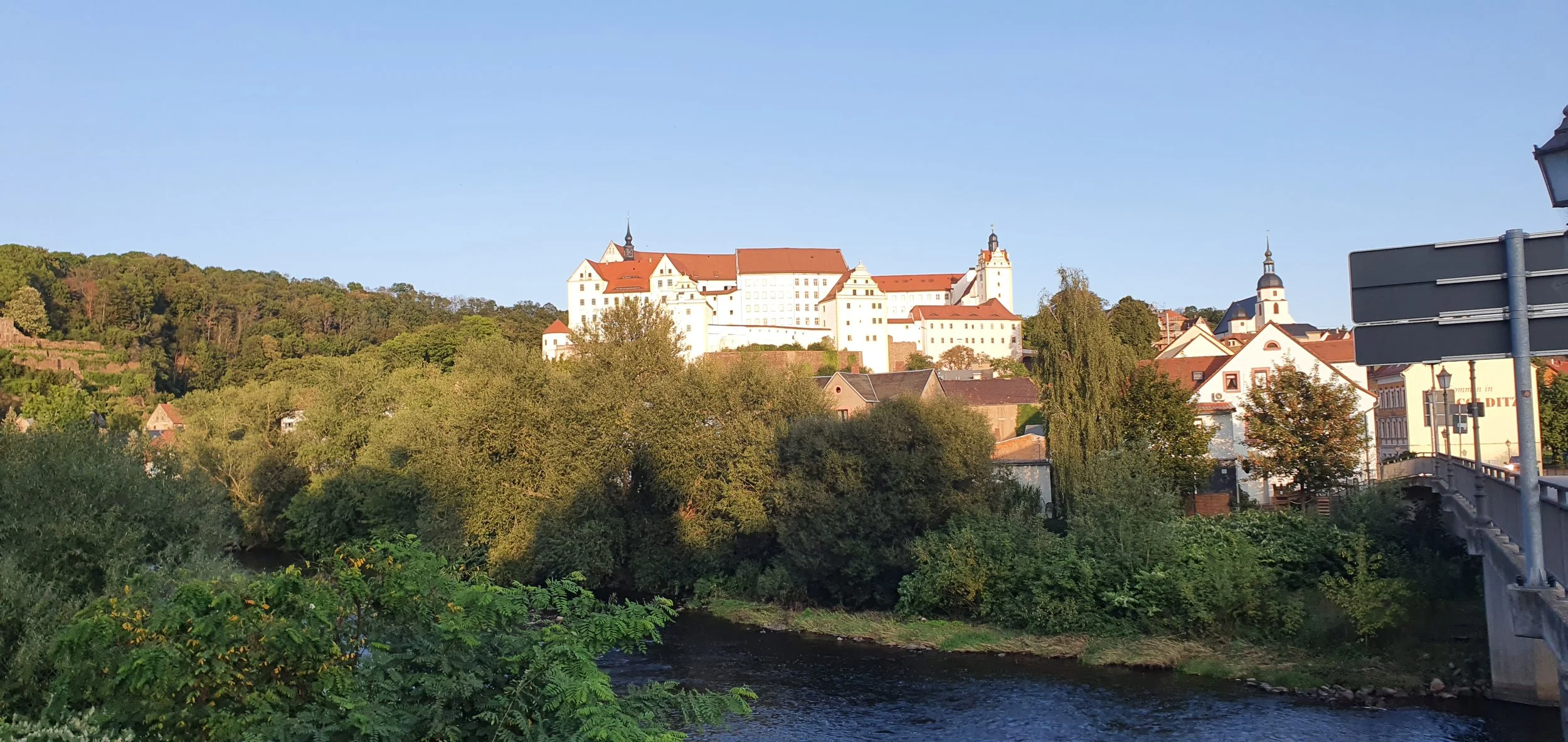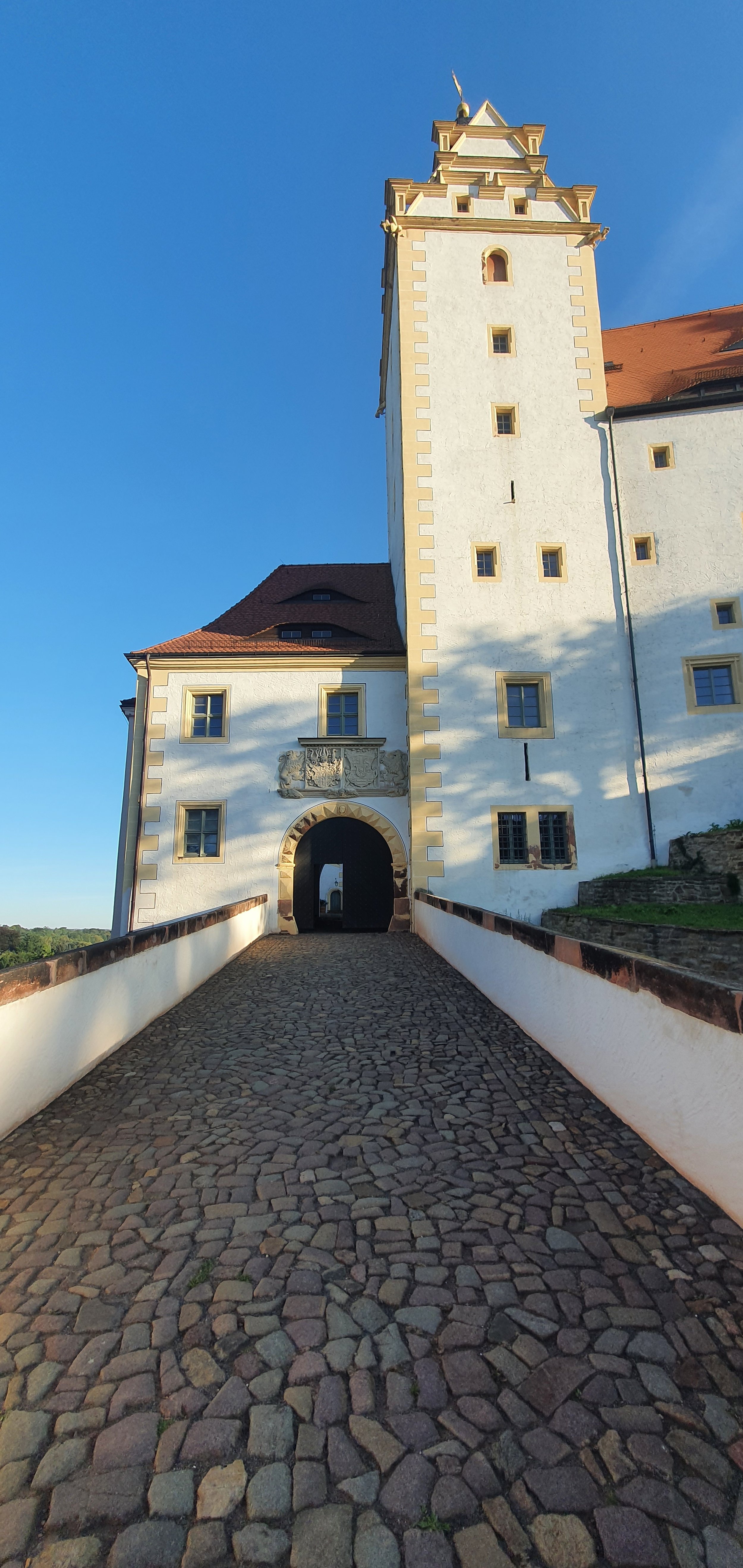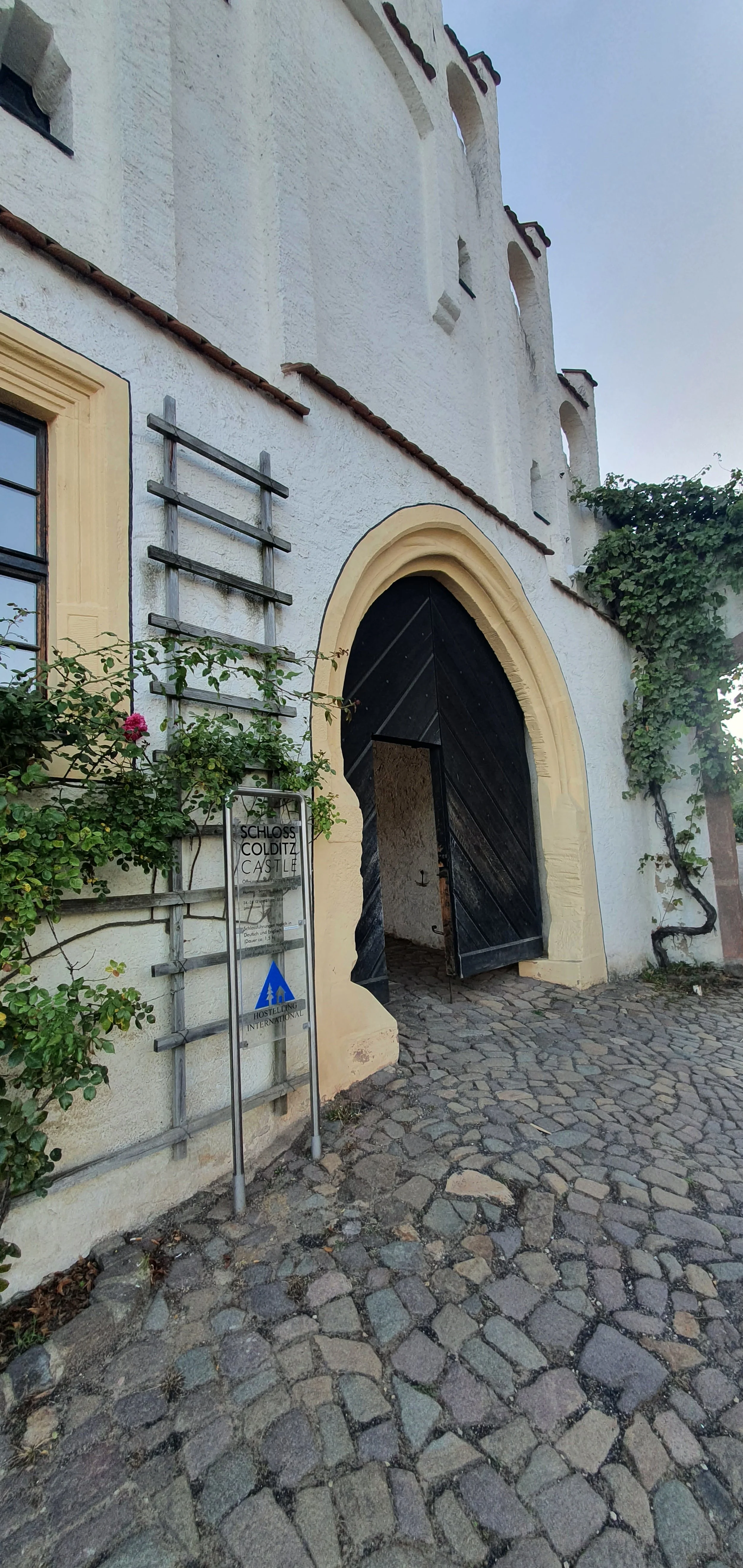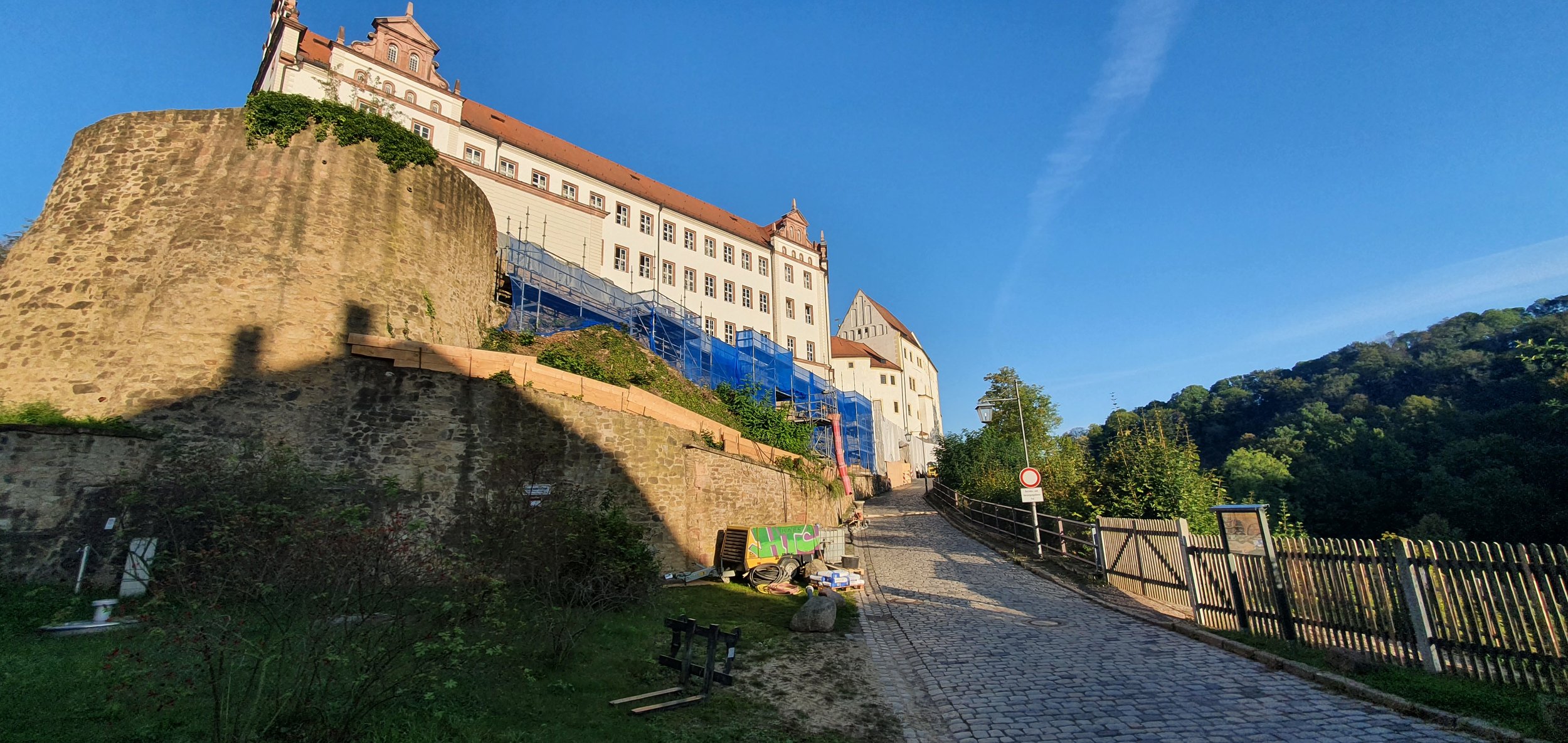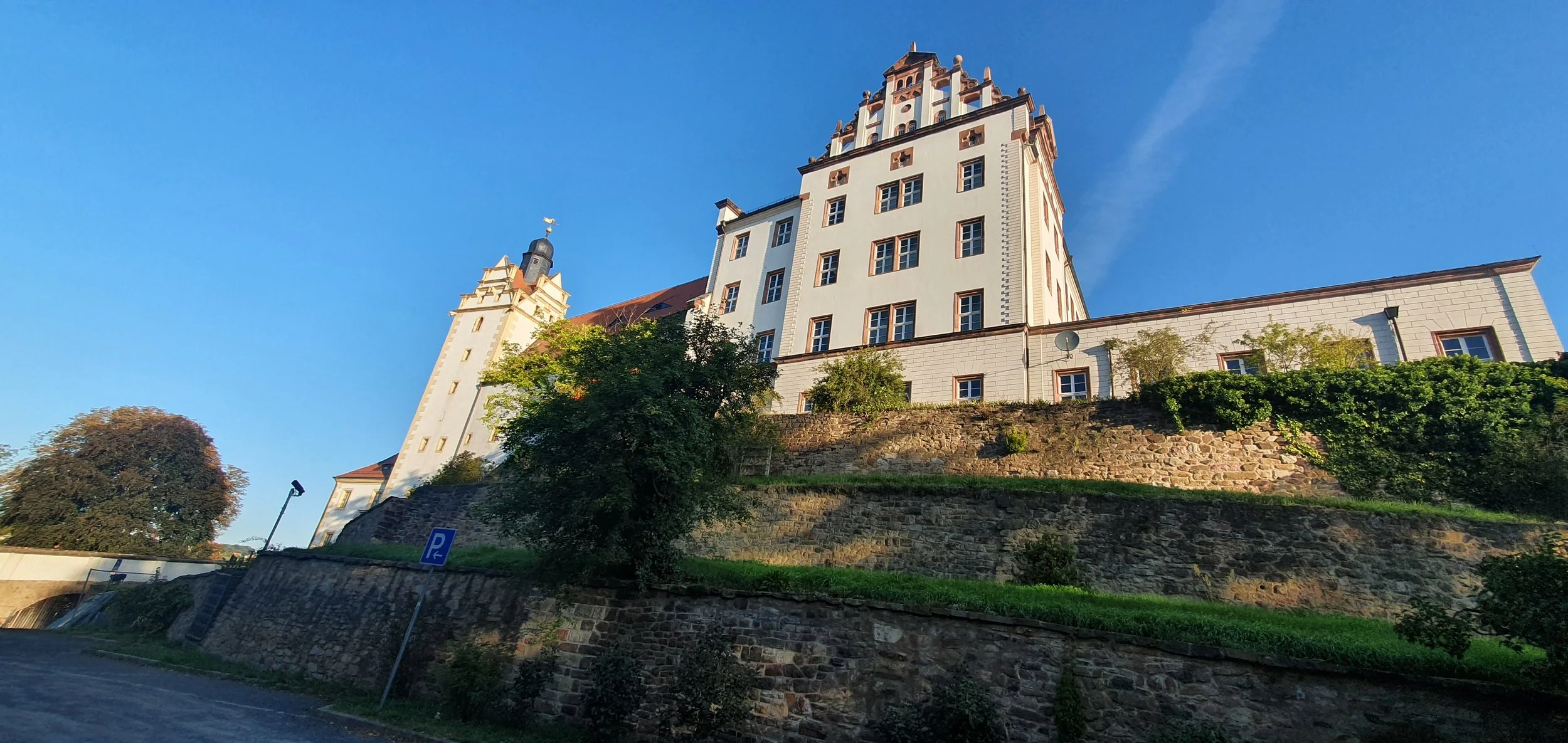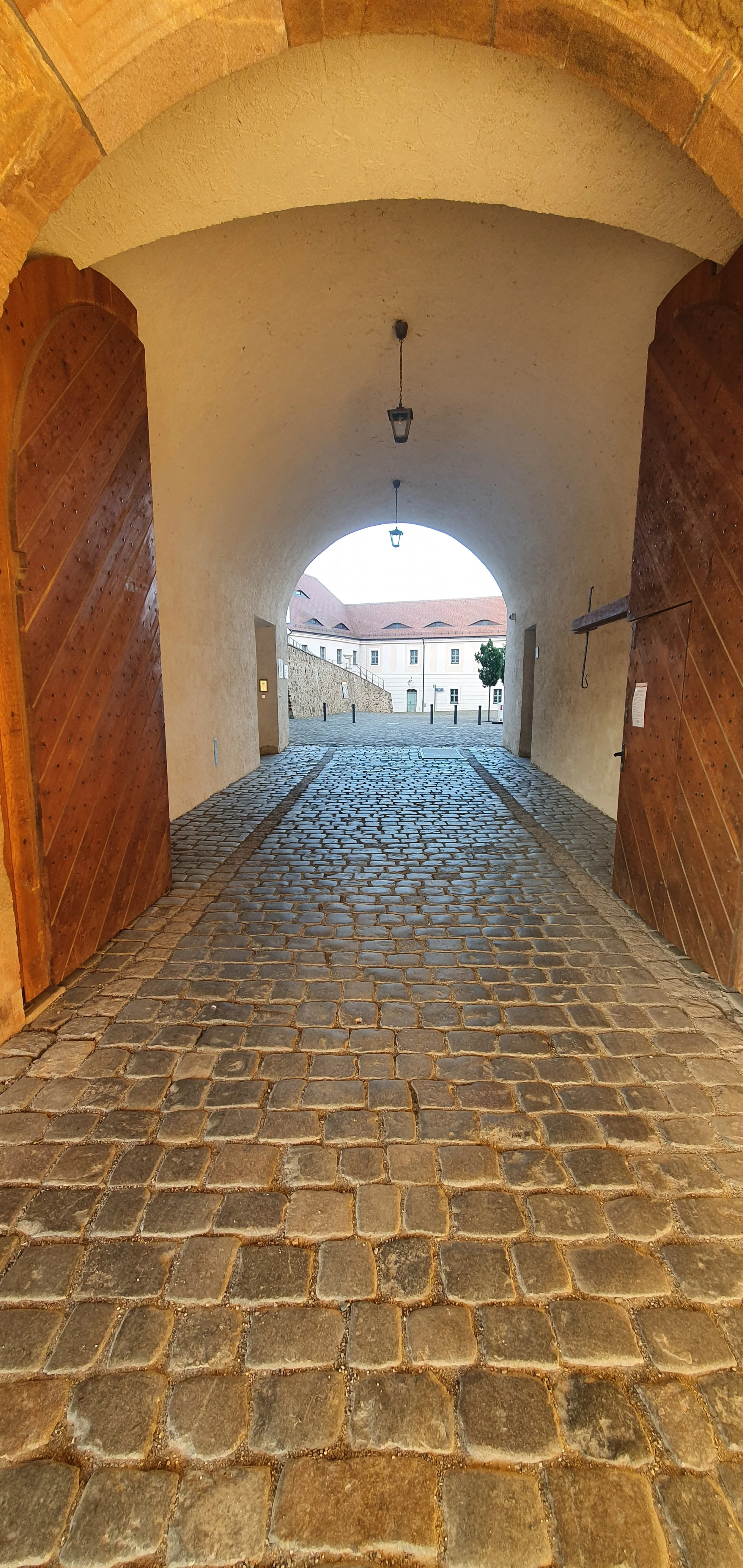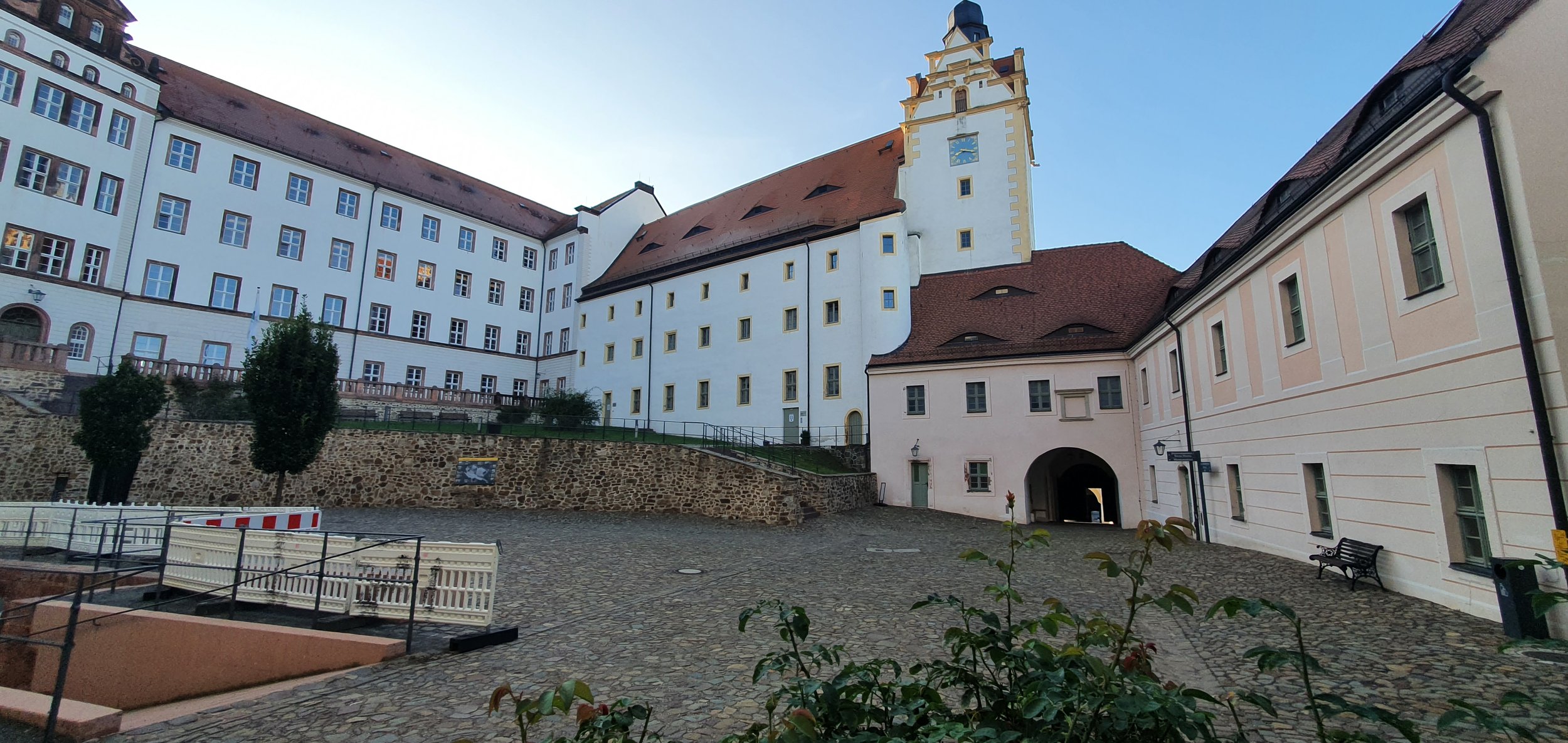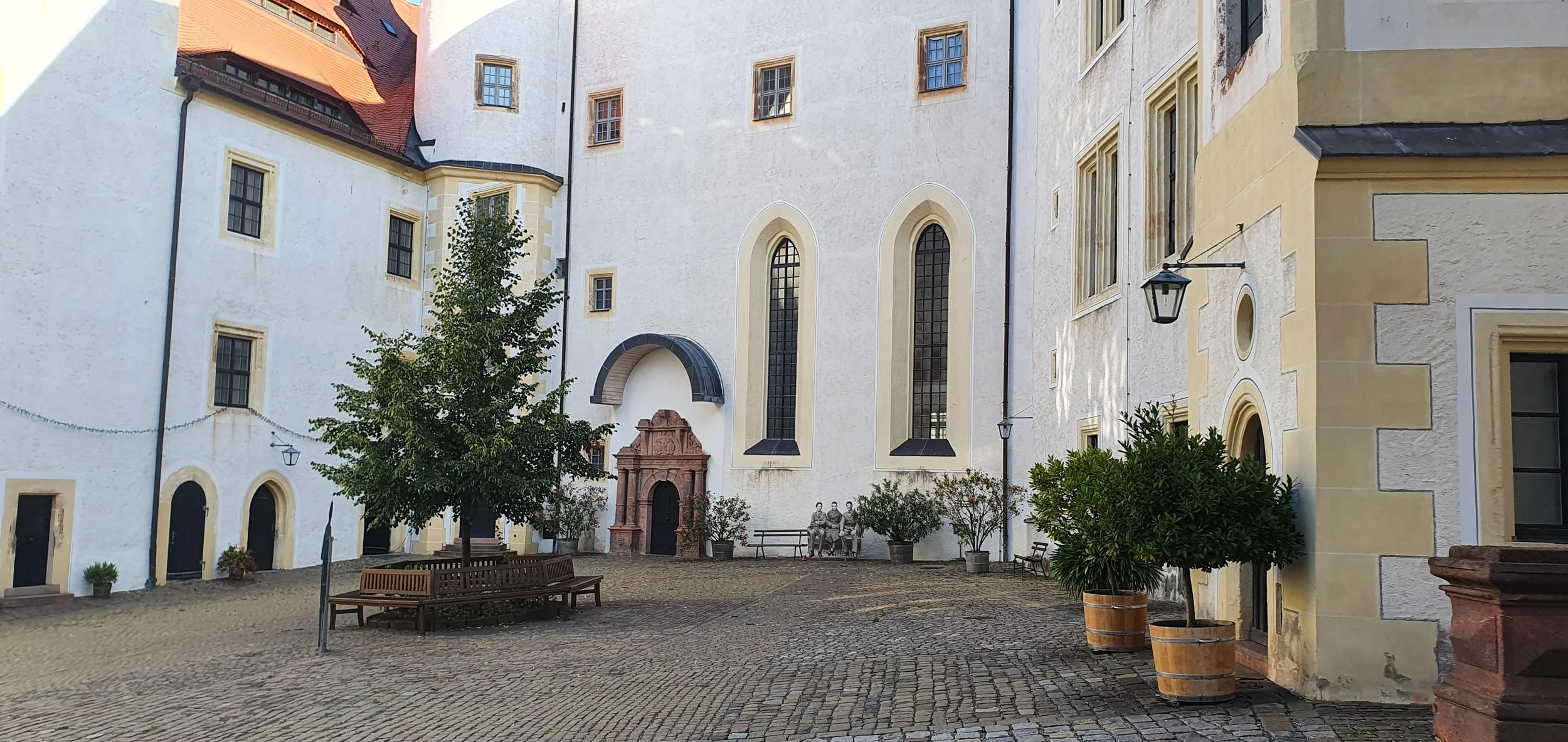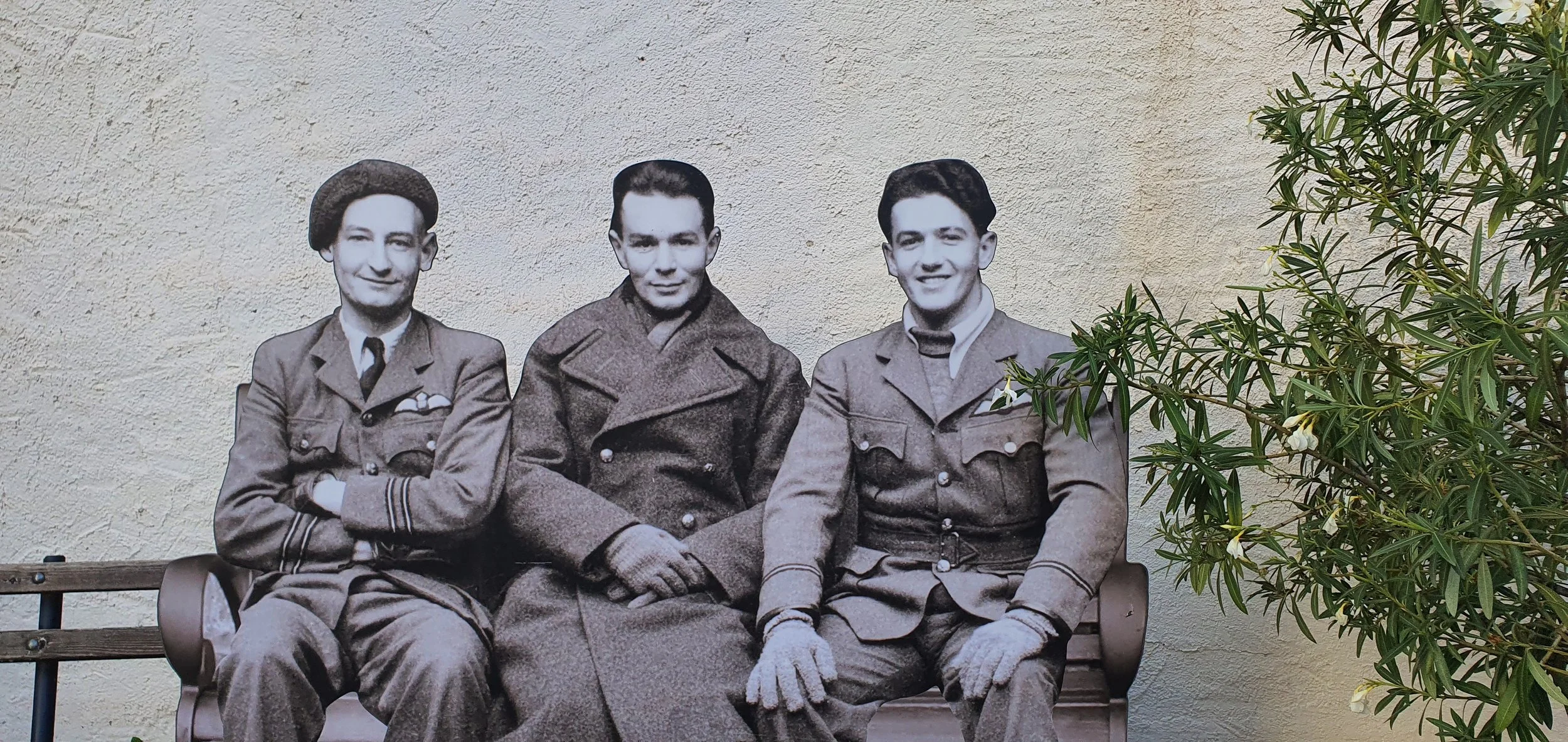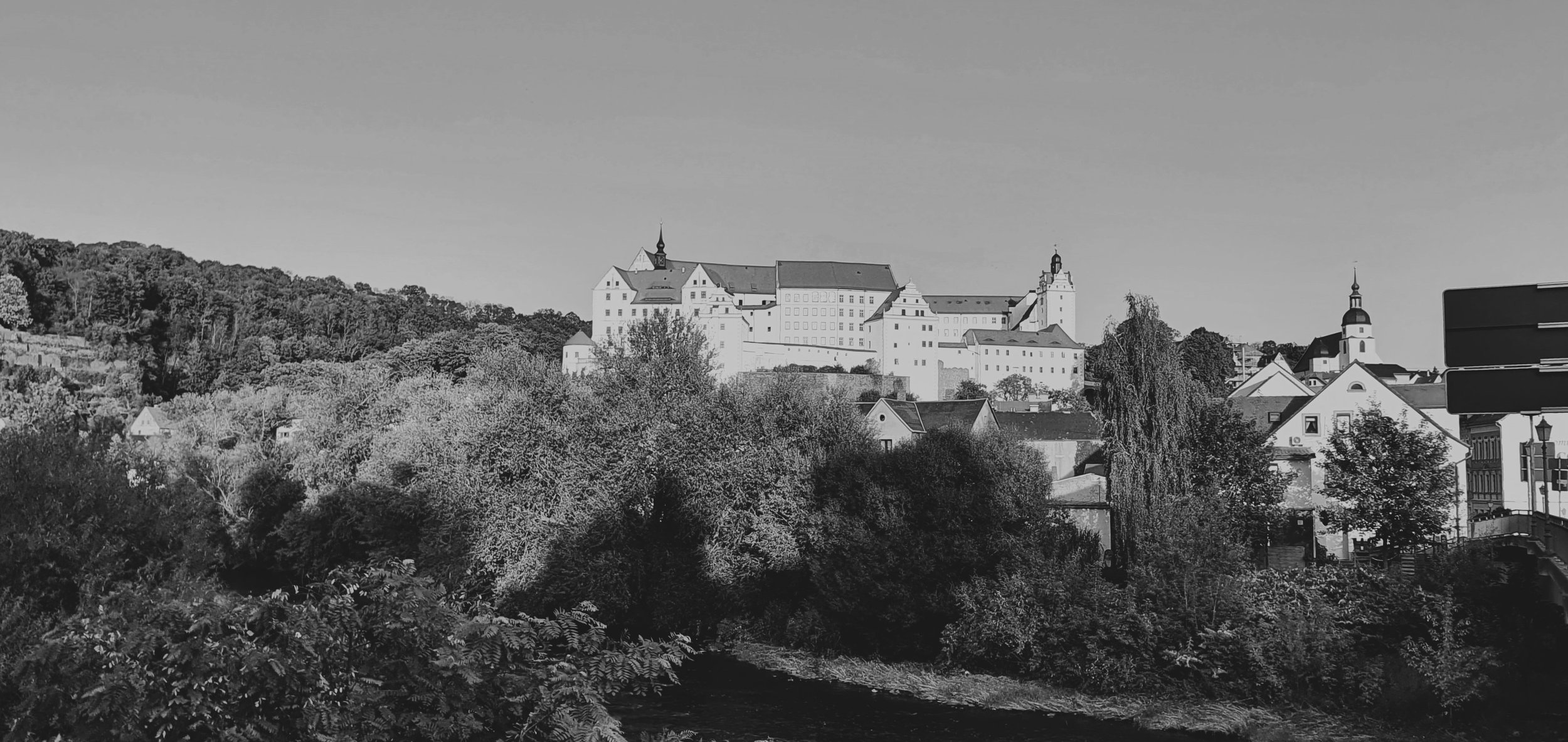
My Photos
Colditz Castle
Colditz 1 - Colditz Castle, German Schloss Colditz, German prisoner-of-war camp in World War II, the site of many daring escape attempts by Allied officers. The castle sits on a steep hill overlooking the Mulde River as it flows through the small Saxon town of Colditz, about 30 miles (48 km) southeast of Leipzig.
View from a bridge - A former residence of the kings of Saxony, the castle was used in 1939 as a prisoner-of-war camp, and in 1940 it became a maximum security prison for escape-prone Allied officers.
Glider site - In one of the most ambitious escape attempts from Colditz, the idea of building a glider, was brought up by two British pilots, Jack Best and Bill Goldfinch, who had been sent to Colditz after escaping from another POW camp. They were encouraged by two army officers, Tony Rolt and David Walker, who had recently arrived in the camp. It would be Tony Rolt who would recommend the chapel roof, since he noticed it was obscured from the view of the Germans.
View of the Bridge - Baderbergbrücke bridge
Entering the town - Colditz is situated in the Leipzig Bay, southeast of the city of Leipzig. The town centre is located on the banks of Zwickau Mulde river, south of its confluence with the Freiberg Mulde. The municipality had a population of 8,374 in 2020.
Inner Gate - This thousand-year-old fortress was in the heart of Hitler's Reich, four hundred miles (640 km) from any frontier not under Nazi control. Its outer walls were seven feet (two metres) thick and the cliff on which it was built had a sheer drop of two hundred and fifty feet (75 metres) to the River Mulde below.
Main gate - The Oflag IV C prisoner of war camp was established in October 1939. The armed forces manage it until the end of the war according to the rules of the Geneva Convention
Exercise entrance - On 12 May 1941, Polish Lieutenants Miki Surmanowicz and Mietek Chmiel, attempted to rappel down a 36 m (120 Ft) wall to freedom on a rope constructed out of bed sheets. In order to get into position, both men put themselves into solitary confinement. After forcing open the door and picking the locks, they made their way to the courtyard, where they climbed up to a narrow ledge. From the ledge they were able to cross to the guard house roof, and climb through an open window on the outer wall. Reusing their bed sheet rope, they lowered themselves towards the ground. They were caught when the German guards heard the hobnailed boots of one of the escapers scraping the outside of the guardhouse wall.
Rear view - For nearly 100 years, from 1829 to 1924, Colditz was a sanatorium, generally reserved for the wealthy and the nobility of Germany. The castle thus functioned as a hospital during a long period of massive change in Germany, from slightly after the Napoleonic Wars destroyed the Holy Roman Empire and created the German Confederation, throughout the lifespan of the North German Confederation, the complete reign of the German Empire, throughout the First World War, and until the beginnings of the Weimar Republic. Between 1914 and 1918, the castle was home to both psychiatric and tuberculosis patients, 912 of whom died of malnutrition. The castle was home to several notable figures during its time as a mental institution, including Ludwig Schumann, the second youngest son of the famous composer Robert Schumann, and Ernst Baumgarten, one of the original inventors of the airship.
Entrance - Pat Reid claimed in Colditz: The Full Story that there were 31 "home runs", whereas German authorities cite 30, and some other sources count 36. Reid included prisoners from the hospital and prisoners being transported, who were not directly under Colditz staff control. Henry Chancellor in Colditz: The Definitive History claims 32 escaped, but only 15 were "home runs": 1 Belgian, 11 British, 7 Dutch, 12 French, and 1 Polish. The difference is that Reid claims any successful escape by an "official" Colditz POW a "home run" whereas most other historians only consider escapes from the castle or castle grounds itself as a "home run".
External Courtyard - Those who spend the night at Colditz Castle have the opportunity to sleep in a place rich in history. It served as an internment camp for high-ranking Western Allies during World War II, including Winston Churchill's nephew. The spectacular escape attempts of the prisoners have been chronicled in several books and films – and have made Colditz world famous. Today, Colditz Castle in the Leipziger Land accommodates the European Youth Hostel with its special international flair. Up to 171 guests can stay in the 34 bright, friendly and modern rooms. There are also many conference and common rooms available.
Prisoners Courtyard -The internal buildings and courtyards were perched 250 feet (76 m) above the surrounding terrain and were enclosed by steep stone walls 7 feet (2 m) thick at their base. Staffed by numerous armed guards and located some 400 miles (640 km) from friendly territory, Colditz seemed to offer no hope for escape. Yet, through ingenious tunneling and various ruses, prisoners on some 130 occasions managed to clear the fortress grounds. A total of 32 prisoners managed to reach the frontier without recapture. Colditz fell to the U.S. Army in April 1945.
Prisoners courtyard 2 - The prisoners lived in around this courtyard in a 90 ft (27 m) tall building. Outside, the flat terraces which surrounded the prisoners' accommodation were watched constantly by armed sentries and surrounded by barbed wire. The prison was named Oflag IV-C (officer prison camp 4C) and was operated by the Wehrmacht.[3]
Prisoners courtyard 3 - The inner courtyard of Colditz castle which was used as the prison yard when the castle was the POW camp Oflag IV-C during World War II. French prisoners used the bell tower (left) to access the wine cellar from which they tunneled under the chapel (behind the tree).
Prisoners - Captain Patrick R. Reid, who successfully escaped from Colditz in 1942, went on to write multiple works on the living conditions and various escape attempts at Colditz from 1940 to 1945: The Colditz Story and The Latter Days at Colditz. In the early 1970s, he served as a technical consultant for a BBC television series, Colditz (1972), featuring David McCallum, Edward Hardwicke and Robert Wagner, that focused on life at Colditz.

